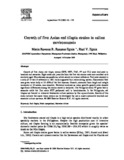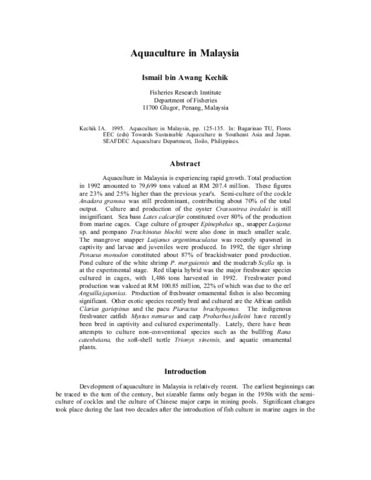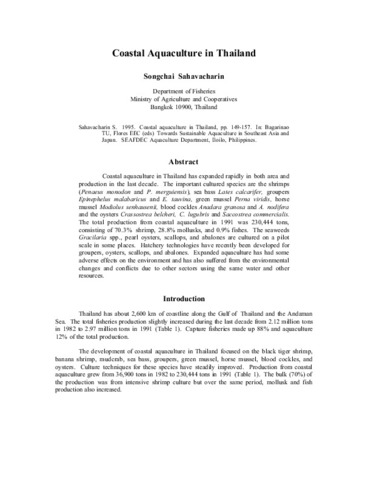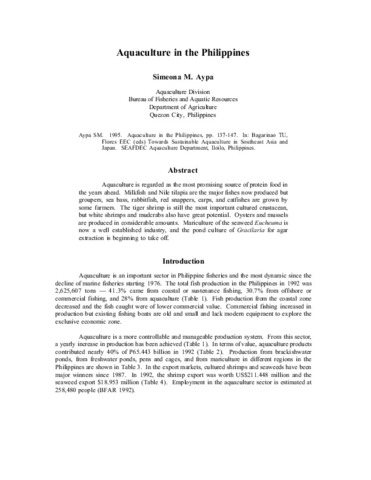Growth of five Asian red tilapia strains in saline environments

View/
Request this document
Date
1999Page views
140Metadata
Show full item recordCited times in Scopus
Share
Abstract
Growth of five Asian red tilapia strains (BFS, NIFI, FAC, PF and HL) were evaluated in brackish and seawater. Eight-week-old juveniles from the five test strains were size-matched with similarly aged Oreochromis mossambicus which served as internal reference. Fish were stocked at a ratio of 15 test:15 reference in 100-l tanks supported by a recirculating system. Commercial feed was given twice daily at 10-20% of the fish biomass. Growth, measured from length and weight increment at 10 weeks, was recorded. Statistical analyses on mean specific growth rates showed significant differences among the strains reared in seawater. The Philippine strain PF grew best in seawater while the Thai strain NIFI performed well in brackishwater. In the Philippines, red tilapias are farmed in intensive freshwater culture systems by few aquaculturists. Results of this study indicate that some Asian strains can be developed for use in more sustainable brackish and seawater culture systems.
Suggested Citation
Romana-Eguia, M. R. R., & Eguia, R. V. (1999). Growth of five Asian red tilapia strains in saline environments. Aquaculture , 173(1-4), 161-170. https://doi.org/10.1016/S0044-8486(98)00484-0
Subject
Collections
- AQD Journal Articles [1215]
Related items
Showing items related by title, author, creator and subject.
-
Aquaculture in Malaysia
Kechik, Ismail bin Awang. (Aquaculture Department, Southeast Asian Fisheries Development Center, 1995)Aquaculture in Malaysia is experiencing rapid growth. Total production in 1992 amounted to 79,699 tons valued at RM 207.4 million. These figures are 23% and 25% higher than the previous year's. Semi-culture of the cockle ... -
Coastal aquaculture in Thailand
Sahavacharin, Songchai (Aquaculture Department, Southeast Asian Fisheries Development Center, 1995)Coastal aquaculture in Thailand has expanded rapidly in both area and production in the last decade. The important cultured species are the shrimps (Penaeus monodon and P. merguiensis), sea bass Lates calcarifer, groupers ... -
Aquaculture in the Philippines
Aypa, Simeona M. (Aquaculture Department, Southeast Asian Fisheries Development Center, 1995)Aquaculture is regarded as the most promising source of protein food in the years ahead. Milkfish and Nile tilapia are the major fishes now produced but groupers, sea bass, rabbitfish, red snappers, carps, and catfishes ...




